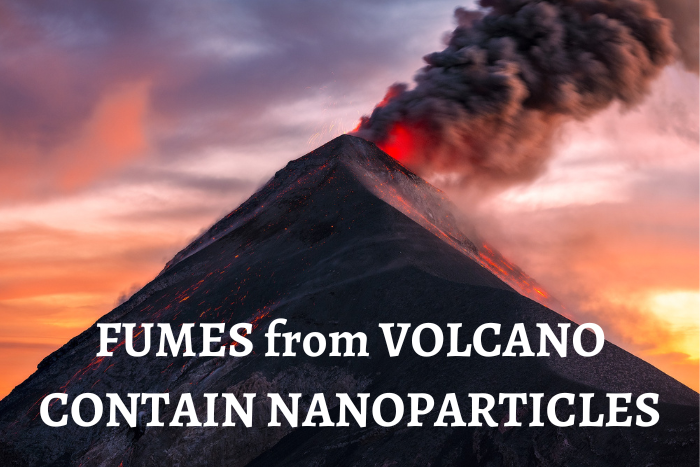Why do I want you to pay attention to these measurements? The words nano and pico will be used more often than before. Why? Is it good for humans? Does it bring any benefits?
Did you hear about nanotechnologies before? I mean, two or three years ago? Mayne somebody worked or works in this field, but a layperson does not read about it on social media.
However, nowadays, people start to pay more attention to it. Why?
Are new technologies beneficial to people?
After three years of various events, when people met more and more people who had their health changed and livelihoods destroyed, questions started to pop out.
I knew from the beginning that something fishy was going on because of dealing with lies before. The description of RNA vaccine was strange such as gene editing.
I thought, why do I need that when my genes, thanks to God, behave pretty well? Additionally, I had a great experience with Eastern Medicine, Noni Leather, and pico-ionic minerals that kept me in balance and out of trouble.
I learned that pico ionic minerals are essential to my body because of my weakness in sweets and occasional incomplete diet.

I was happy with pico ionic minerals, but constantly hearing and reading about nanoparticles that can reach the body through air, patches, or injections sparked my curiosity to check out.
How long are nanoparticles used for humans?
Nanoparticles that fall within the nanoscale range, typically ranging in size from 1 to 100 nanometers (nm). I know it is not easy to grasp a scale of how small these nanoparticles are. One nanometer equals one billionth of a meter (10^-9 meters).
However, it is better to see how it looks on the human, who is split into many pieces, to show the size of various particles.
We come to a new era when technologies change art every minute. Times, when you could easily comprehend a simple operation without digging too much into the scientific literature, are gone.
Of course, you do not know specific details if you are not a doctor. However, you know that if you broke a leg, you will have X-Rays, the doctor will put your bones in one place, and the time to heal comes. It is not a brainer.
Nowadays, plenty of operations are done with lasers that save time; intervention into organs is minimal, and so on.
Where are nanoparticles in nature?
Have you seen a volcano? I am not, only in a movie, but it was a scary sight. These fumes, also little particles in the desert when sand storms happen, contain nanoparticles.
Do you know that you can find nanoparticles in nature? It seems that volcanos emit during eruption plenty of nanoparticles, seas provide us with aerosols of salts, trees give us terpenes, and dust from deserts contains nanoparticles too.

Thankfully, most people understand the dangers of nature and do not sniff fumes from volcanoes or do not stay without covers during sand storms. Usually, everybody tries to escape or stay away till everything goes quiet.
How about the usage of nanoparticles in everyday life?
Examples where nanoparticles take part
Nowadays, nanoparticles are everywhere. Beauty products, health items, medicine, and vaccine contain nanoparticles.
For example, some patches use nanotechnology. LifeWave, LLC, produces various patches that enhance the immune system. Susanne Somers uses a patch of glutathione to detoxify her body from various chemicals that surround us in everyday life.
It is pleasant that these patches are not toxic and work on the cellular level.
Do you know what glutathione is? It is the most powerful antioxidant in the body. It helps the liver to remove toxins from the body.
What sounds impressive is that glutathione binds cancer-causing materials in a process called chelation. In this way, nanoparticles do an excellent job for the body when somebody uses LifeWave patches.
How do nanoparticles help?
Because of the tiny size, the needed materials can reach cells. It means that the effect will be immediate and timely.
However, it depends on the kind of materials used. For example, in the video below, you will hear a neurosurgeon Dr.Russell Blaylock, explaining the content of chemtrails. It seems that aluminum nanoparticles are not the best option to breathe for humans.

There are more types of subjects that are nanoparticle size
There are
- Viruses
- RNA and DNA
- Carbon nanotubes
- Quantum dots
Nanoparticles and picometer ions refer to different entities based on their size and composition:
Nanoparticles and picometer-size ions can do bad or good jobs. It depends on what kind of intention is used.
I wrote in previous blogs about products containing picometer-size minerals. Think about it when you want to replenish your body with organic, taken from natural supplements. They absorb quickly and efficiently at a 100 percent range.
Patches from LifeWave contain nanoparticles that help the body regain balance, strengthen the immune system, and detoxify from chemicals.
Difference between ion and particle
Ion definition
An ion is an atom or a group of atoms that are charged in a positive or negative way.
Particle definition
A particle is a small object that can vary in size, volume, or mass. This description is in general understanding and can be used in various scientific fields.
Conclusion
Different terms, such as nanoparticle or picometer-size ions, are used mostly for scientific purposes. The most important thing is the kind of purpose that serves humans.
Does it help humans, or does it harm them?
Nanoparticles and picometer-size ions can reach cells. It can rejuvenate them, or it can poison them. It means that we must be diligent and informed and take care of our precious bodies.
Leave a Reply